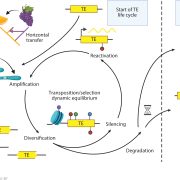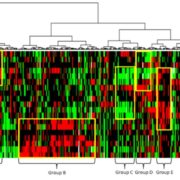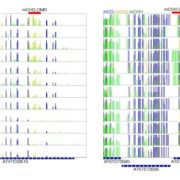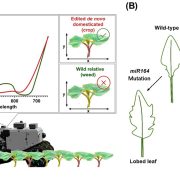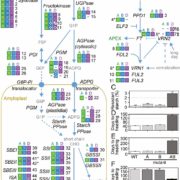When and how did carrots turn orange?
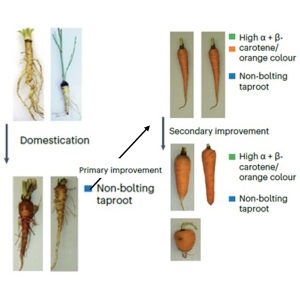 Carrots were not always orange, and a new paper by Coe, Bostan, Rolling et al. sheds new light into the history of carrot domestication and improvement, i.e., how we went from white, knotty carrots to the orange, smooth ones that are now consumed all over the world. The authors published a new version of the carrot genome that covers over 90% of its total estimated size, and they analyzed over 600 carrot accessions to reveal that carrot domestication first started in central Asia about 1200 years ago, followed by selection for orange carrots around 500 years ago. Contrary to previous reports, the authors propose that domestication and improvement resulted in a decrease in genetic diversity in cultivated carrot accessions. Carrot domestication and improvement involved the selection of crucial developmental traits including delayed flowering time, as the taproot becomes inedible upon flowering. The authors identified a gene in each of three crucial quantitative trait loci associated with the orange phenotype of modern carrots, involved in carotenoid biosynthesis, light perception responses and chloroplast biogenesis. Recessive alleles of these three genes are responsible for α-carotene and β-carotene accumulation, which gives the striking orange phenotype. These findings are in line with historical documents related to carrot domestication and improvement, and they provide new insights into the molecular mechanisms underlying the familiar orange phenotype. (Summary by Laura Turchi @turchi_l) Nature Plants 10.1038/s41477-023-01526-6
Carrots were not always orange, and a new paper by Coe, Bostan, Rolling et al. sheds new light into the history of carrot domestication and improvement, i.e., how we went from white, knotty carrots to the orange, smooth ones that are now consumed all over the world. The authors published a new version of the carrot genome that covers over 90% of its total estimated size, and they analyzed over 600 carrot accessions to reveal that carrot domestication first started in central Asia about 1200 years ago, followed by selection for orange carrots around 500 years ago. Contrary to previous reports, the authors propose that domestication and improvement resulted in a decrease in genetic diversity in cultivated carrot accessions. Carrot domestication and improvement involved the selection of crucial developmental traits including delayed flowering time, as the taproot becomes inedible upon flowering. The authors identified a gene in each of three crucial quantitative trait loci associated with the orange phenotype of modern carrots, involved in carotenoid biosynthesis, light perception responses and chloroplast biogenesis. Recessive alleles of these three genes are responsible for α-carotene and β-carotene accumulation, which gives the striking orange phenotype. These findings are in line with historical documents related to carrot domestication and improvement, and they provide new insights into the molecular mechanisms underlying the familiar orange phenotype. (Summary by Laura Turchi @turchi_l) Nature Plants 10.1038/s41477-023-01526-6


